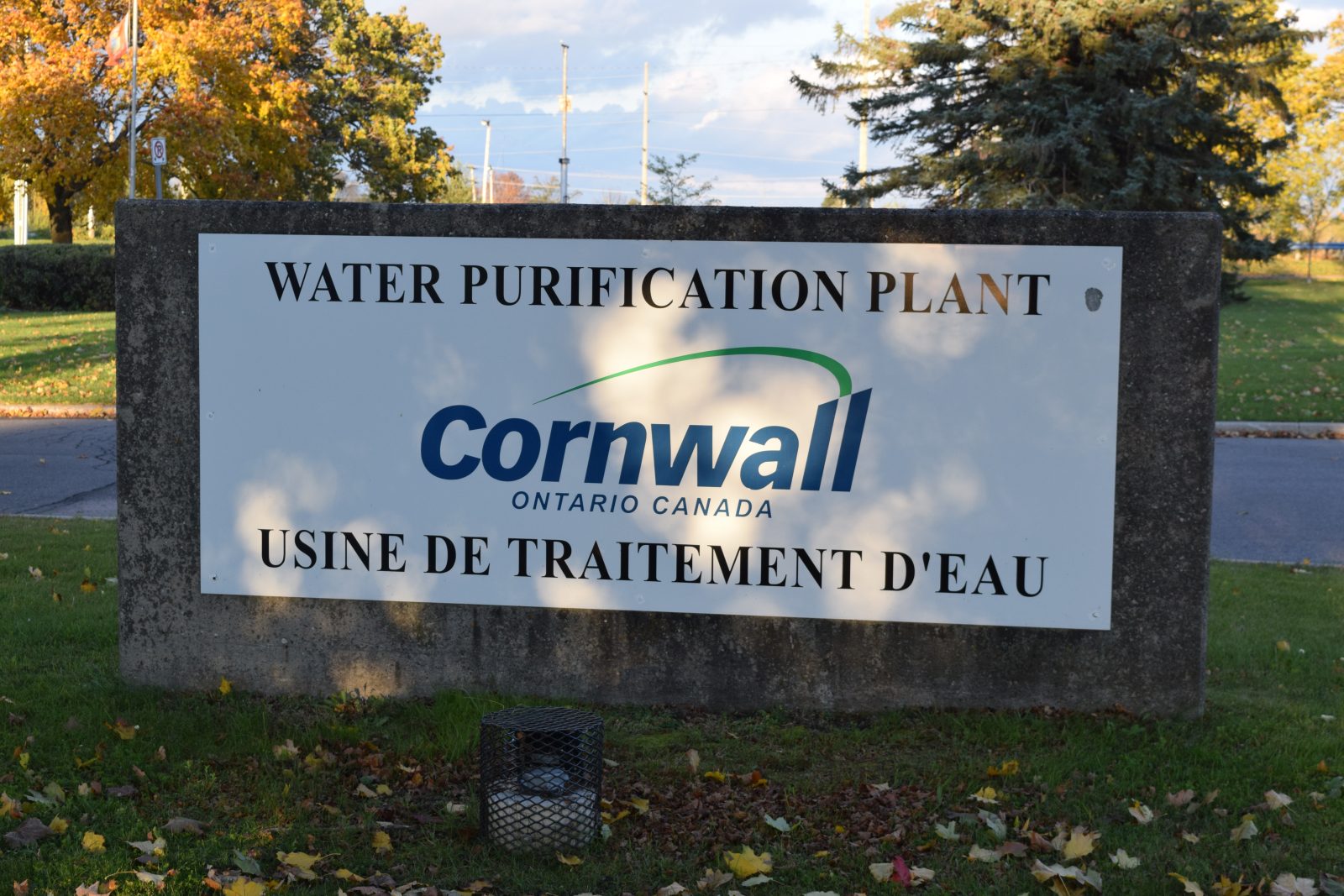CORNWALL, Ontario – Cornwall City Council received a report from EVB Engineering at a special meeting on Monday, Nov. 1 about a potential vulnerability to the city’s water supply and solutions on how to address the problem.
The water received at the City of Cornwall’s Water Purification Plant (WPP), located on Second St. W., is taken from the St. Lawrence River through an intake pipe located west of the R.H. Saunders Dam in the city’s west end.
That pipe is roughly 65-years-old and is reaching the end of its service life. Even if it were not so old, the fact that the water plant has only one intake pipe was identified as a vulnerability in the system.
“This infrastructure has no redundancy and within the next 10 years or so will reach the end of its life cycle,” said Bill de Wit, Cornwall’s General Manager of Infrastructure and Municipal Works. “As you will hear tonight, failure of this infrastructure could have catastrophic consequences for our municipality.”
EVB Engineering outlined that in the event of a catastrophic failure of the intake pipe, it would take Municipal Works five days to re-establish water flow to the WPP. During that time, long-term care facilities, the hospital, schools, homes and businesses would be without access to running water, as would the Cornwall Fire Services.
After the water flow is re-established the City of Cornwall would be under a boil water advisory for an additional 10 days.
EVB analyzed nine possible solutions to this problem, and in the end selected to of those solutions as the best options for Council to potentially pursue.
EVB recommended building a new secondary water intake pipe just to the west of the Seaway International Bridge. Under the first option, the pumping station would be located on the former Domtar lands, and under the second option it would be located just south of King St.
Positive aspects of both of these locations is that they are both close to the WPP. Disadvantages would be that it would require the pumping of raw water and the necessity for a deep pumping station.
The process to complete the construction of a new intake pipe is expected to take up to five years, with the next step being an X-Ray of the current intake pipe, which de Wit said would be an item in the 2022 budget.
With a municipal election coming up, Councillor Claude McIntosh acknowledged that this decision will likely be left to a future Council, but stated that he was nonetheless impressed.
“It takes a lot for a consultant to impress me and you’re the exception on this one,” he said.
McIntosh did raise concerns about the cost and how the City would pay for that. Both of the preferred options cost roughly $40 million give or take $500,000.
“We’re talking some big dollars here. More than the city has spent on any project previously,” said McIntosh.
He asked if water bills would increase because of this cost, and pointed out that at a recent meeting that Council had about implementing water meters for all customers that they were told that this would be a savings to users.
“We were told that our water bills would potentially drop a month ago, but that might not necessarily be the case,” he said.
City of Cornwall Chief Financial Officer Tracey Bailey acknowledged that funds from water bills would be used to pay for the cost of this project and that could lead to increased water rates.
Councillor Justin Towndale asked if the Mohawk Council of Akwesasne would be consulted on this project, as the new intake pipe would be situated in the middle of the St. Lawrence River between Akwesasne and Cornwall and de Wit acknowledged that they would be consulted on the project.
“I like the King St. option,” Towndale added. “The one thing that stuck out to me, Transport Canada lands, waterfront land acquisition is something that we are currently working on that can be added to that portfolio I think, which may give us a benefit if we’re trying to acquire that land for municipal purposes.”
The final decision on where to place the secondary intake pipe will be left to a future council meeting.




